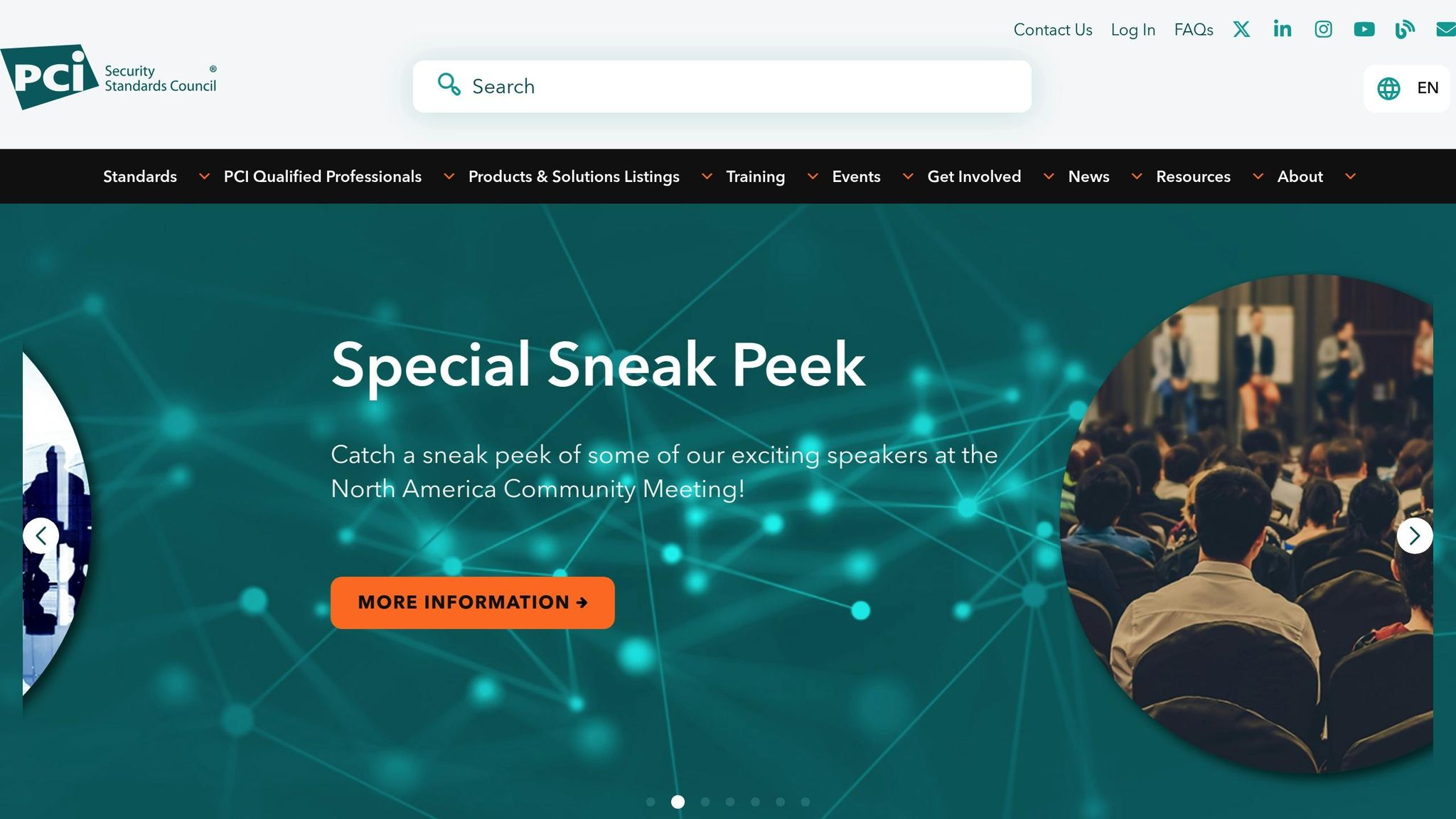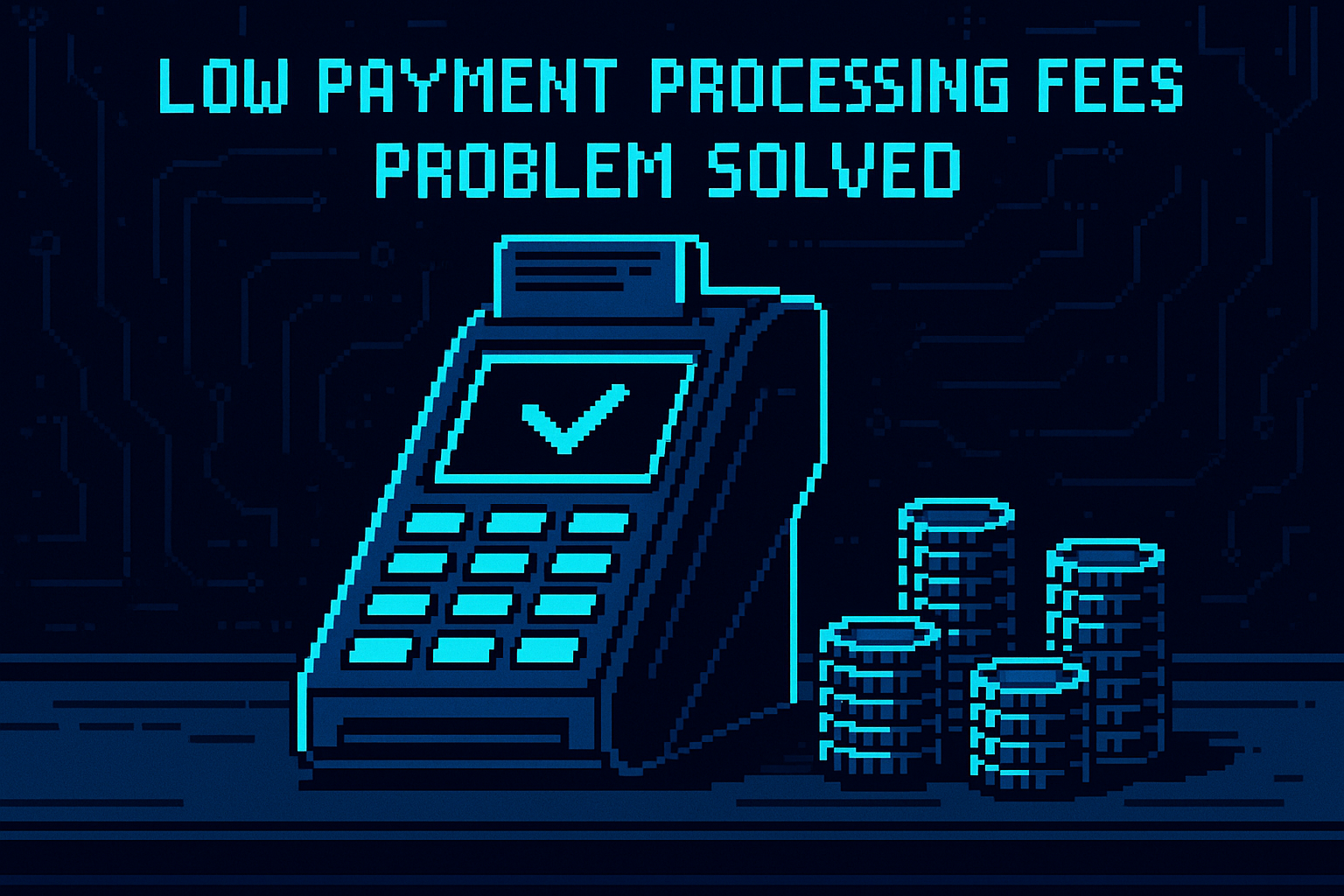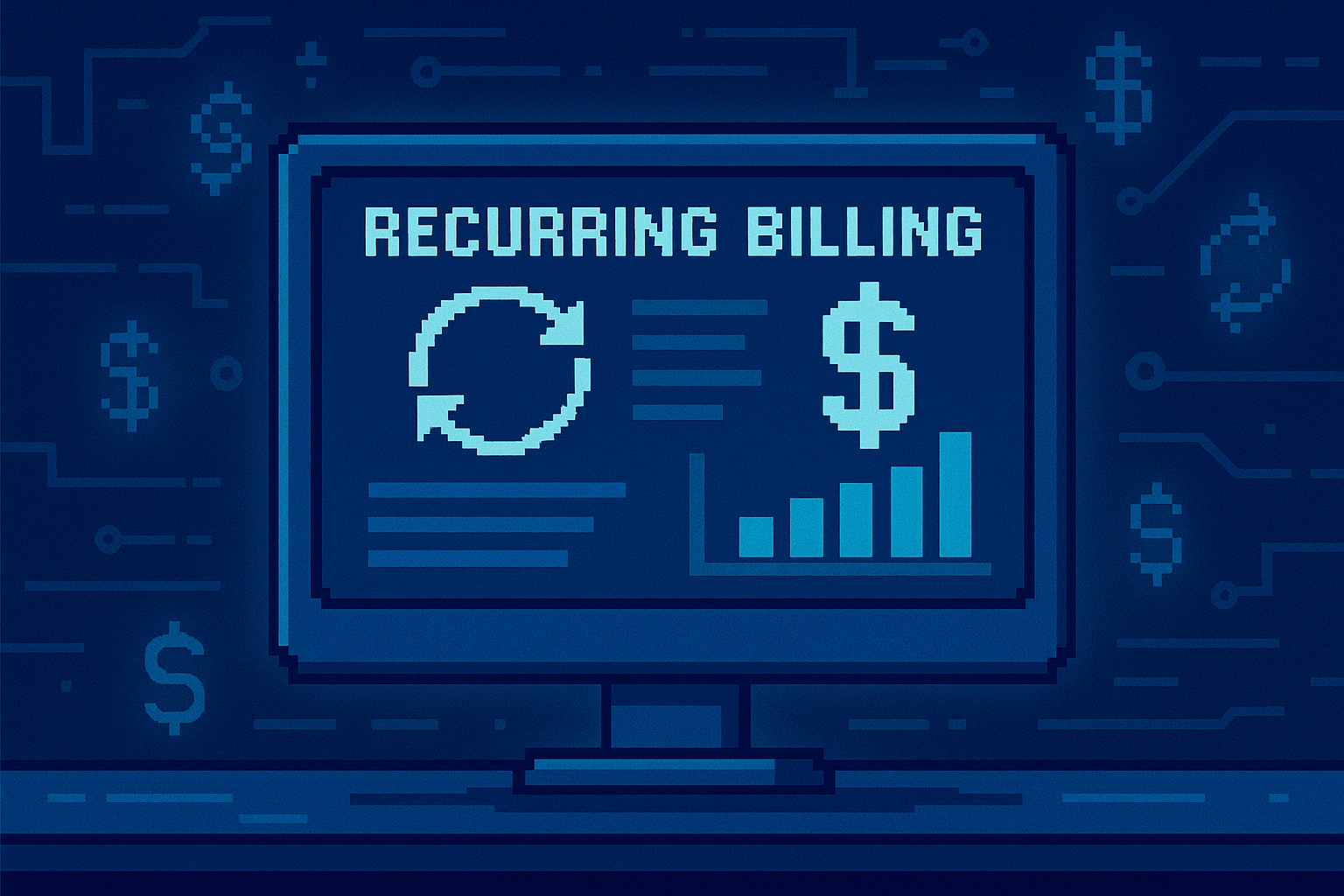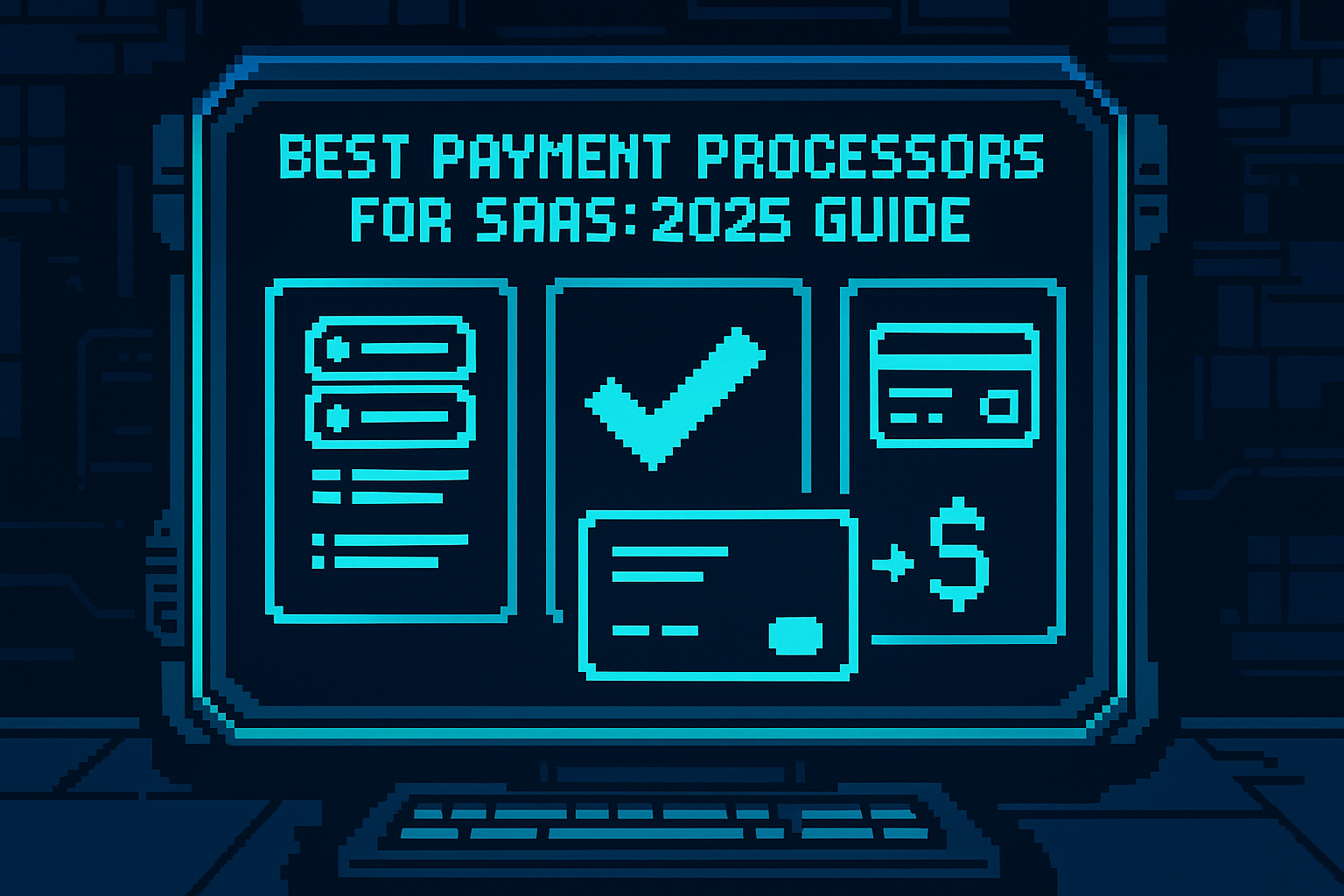Payment processing is the backbone of global SaaS businesses. Here's what you need to know:
- SaaS payment systems handle recurring billing, subscription management, and revenue tracking.
- Key challenges include supporting multiple currencies, complying with regional tax laws, and integrating diverse payment methods.
- Global expansion relies on smooth payment experiences, reducing failed transactions, and offering local payment options.
- Core components include recurring billing, payment gateways, and merchant of record solutions.
- Security and compliance are non-negotiable, requiring encryption, PCI DSS compliance, and fraud prevention.
A well-structured payment system not only ensures smooth transactions but also boosts customer satisfaction and revenue growth. Let’s dive into the details.
What Should an Ideal Payment Platform for SaaS Look Like?
Main Parts of SaaS Payment Systems
Creating a global SaaS payment system involves three main components that work in harmony. Each part plays a crucial role, from managing recurring subscriptions to handling international transactions. Together, these elements form a payment infrastructure that can grow alongside your business.
Recurring Billing Systems
Recurring billing systems are at the heart of managing SaaS subscriptions. They automate customer charges based on subscription plans - whether monthly, annually, or even custom billing cycles. This automation reduces revenue risks by handling subscription changes, prorated charges, and even recovering failed payments through smart retry strategies. For example, if a customer upgrades their plan mid-cycle, the system calculates the additional cost and adjusts the billing date accordingly.
Usage-based billing is another powerful feature. Instead of fixed subscription tiers, this model charges customers based on how much they actually use your service. It’s especially useful for platforms like API-based services or storage solutions, where usage can vary significantly. These systems track usage in real time and calculate charges according to pre-set pricing rules.
Payment Gateways and Processors
Payment gateways and processors handle the technical side of transactions, ensuring payments are securely authorized and processed. Acting as a bridge between your SaaS platform and banking networks, gateways manage encryption, fraud detection, and communication with card networks such as Visa and Mastercard.
Transaction routing is a key feature, allowing payments to be directed through the most suitable financial institutions. By routing through multiple processors based on factors like location or transaction type, these systems boost approval rates and minimize downtime.
Multi-currency processing is essential for global operations, enabling payments in local currencies while managing exchange rates. This reduces friction for international customers.
Fraud detection and prevention tools use real-time data and machine learning to flag suspicious activity. By analyzing patterns like transaction speed and geographic anomalies, these systems help lower chargeback rates without overwhelming users with false alarms.
Developer-friendly APIs make integration straightforward. With detailed documentation, SDKs for various programming languages, and webhook systems for real-time notifications, these APIs allow you to create custom payment flows that improve the overall user experience.
Merchant of Record Solutions
Merchant of Record (MoR) solutions take on the heavy lifting when it comes to legal, tax, and compliance responsibilities. By becoming the seller of record for your transactions, these services handle tax collection, regulatory compliance, and financial reporting across multiple regions.
MoR solutions automate tasks like tax calculations and compliance with regulations such as GDPR or local consumer protection laws. This ensures your SaaS business stays compliant while minimizing legal risks.
Multi-regional payment method support is another advantage. While credit cards might dominate in the U.S., customers in Europe may prefer SEPA direct debit, and Asian users might favor digital wallets or bank transfers. MoR solutions integrate with local payment networks, eliminating the need for separate integrations.
Revenue recognition and reporting tools provide detailed financial data for accurate accounting. These systems manage currency conversions, generate transaction reports, and deliver data in formats compatible with popular accounting software.
Chargeback and dispute management services streamline the process of handling payment disputes. With dedicated teams managing responses and gathering necessary documentation, MoR solutions free up your internal resources while reducing the time spent resolving disputes.
Managing Multi-Currency and International Payments
Taking your SaaS business global means navigating a maze of currencies, tax systems, and regional payment preferences. To succeed, you’ll need to tailor your payment processes to meet diverse customer needs. Offering the option to pay in local currencies and displaying prices in familiar formats can significantly improve conversion rates and customer satisfaction.
Setting Up Multi-Currency Support
Handling multiple currencies isn’t just about accepting payments in different denominations - it’s about creating a seamless experience for your customers. This includes displaying prices in their local currency, managing real-time exchange rates, and being upfront about any conversion fees.
Using geolocation tools, you can automatically show prices in a customer’s local currency, which builds trust and simplifies the decision-making process. When it comes to pricing strategies, you can choose between dynamic pricing, which adjusts with exchange rates, or fixed local pricing, which is often preferred for SaaS subscriptions. For instance, you could set a standard rate in your home currency while also offering a fixed local price for international markets.
Be transparent about any conversion fees - either disclose them clearly or incorporate them into your pricing. At checkout, show the exact amount to be charged in the local currency and provide details about the exchange rate used.
For accounting simplicity, you might settle all transactions in USD. Alternatively, using multi-currency accounts can help reduce fees, though it may complicate your financial reporting.
Tax and Legal Requirements
Managing global payments isn’t just about currencies - tax compliance is a crucial piece of the puzzle. Tax regulations for digital services vary widely across countries, and failing to comply can lead to hefty penalties.
For example, in the US, sales tax requirements depend on the state and whether your business meets the economic nexus threshold. In the EU, VAT is calculated based on the customer’s location, often requiring VAT registration and One Stop Shop (OSS) reporting. Staying on top of these shifting regulations is essential.
Additionally, some countries have introduced digital services taxes, which usually target larger companies but could still impact smaller SaaS providers as regulations evolve. Automating your tax calculations can help ensure you apply the correct rates, account for exemptions, and maintain accurate records for audits.
Payment Localization Guidelines
Localization isn’t just about translating your website - it’s about aligning your payment processes with regional norms and expectations. This includes everything from formatting dates and numbers to offering payment methods that customers in different regions prefer.
For example, in the US, credit cards are the dominant payment method, but in other countries, bank transfers or digital wallets might be more popular. Pay attention to details like currency symbol placement - $100.00 in the US versus 100,00€ in many European countries.
Your checkout process should also reflect local preferences. Some customers may expect detailed invoices with tax breakdowns and company registration details, while others might prefer a quick, no-frills experience. Adapting your language, payment terms, and refund policies to local norms can go a long way in building trust.
With more customers using mobile devices for transactions, optimizing your checkout process for mobile is critical. This includes supporting mobile wallets, ensuring the interface works across different screen sizes, and meeting regional mobile payment standards.
Finally, consider local time zones and holidays when setting up automated billing. This ensures payments are processed on time and avoids unnecessary delays for your customers.
sbb-itb-a989baf
Connecting Payment Systems to SaaS Platforms
Integrating a payment system with your SaaS platform is a critical step in ensuring a smooth experience for your customers. This connection affects how easily users can subscribe, upgrade, or cancel their services. Whether you opt for simple no-code solutions or advanced API integrations, the goal is to streamline transaction management from start to finish.
No-Code Payment Setup
For smaller SaaS platforms, no-code tools can simplify payment processing without the need for coding expertise. This allows you to focus on refining your product rather than diving into complex payment integrations.
Start with payment links for an easy way to accept payments. These links lead to secure checkout pages hosted by your payment provider, eliminating the need for PCI compliance on your end. For a more integrated feel, consider embedded checkout widgets. These forms can be styled to match your brand’s aesthetics, letting customers complete payments without leaving your site.
If your SaaS relies on subscriptions, pre-built billing portals are a game-changer. These portals let customers manage their subscriptions, update payment details, and view invoices - all without requiring development effort from your team. As your business grows, you can transition from these no-code solutions to more robust API-based systems for greater flexibility.
API Integration for Custom Solutions
When your SaaS platform outgrows no-code options, API integration becomes the logical next step. Payment APIs provide the tools needed to securely process transactions while giving you full control over the user experience. RESTful APIs, in particular, offer direct communication with payment gateways, reducing friction during transactions and helping to lower cart abandonment rates.
With APIs, you can create highly customized billing workflows tailored to your business needs. From usage-based pricing to tiered subscriptions and custom enterprise contracts, APIs give you the flexibility to design billing systems that fit your model. They also enable automation for tasks like handling failed payments, prorated upgrades, and revenue recognition.
Software Development Kits (SDKs) simplify the integration process by managing common challenges like error handling and security. Additionally, standard data exchange models help resolve compatibility issues, ensuring your payment system integrates smoothly with your existing setup.
Payment Integration Setup Guide
Setting up payment integration for your SaaS platform requires careful planning and rigorous testing. Start by using a sandbox environment provided by your payment provider. This testing ground replicates the production system, allowing you to verify your integration, check network connectivity, and troubleshoot potential issues before they affect real customers.
Security is a top priority during this process. Encrypt sensitive data both in transit and at rest, and use tokenization to securely store payment methods for recurring billing. Compliance with PCI DSS standards is non-negotiable when handling cardholder data.
Documentation plays a crucial role in implementation. Provide your developers with clear guides, sample code, and detailed API navigation to streamline the process. Robust error-handling mechanisms are equally important - detailed logs and clear notifications can help address unexpected issues, especially with subscription billing.
As your platform scales, load testing becomes essential to ensure peak performance during high-traffic periods. Regularly monitor API performance and usage to identify and resolve bottlenecks before they impact users.
Security, Compliance, and Payment Best Practices
Strong security and compliance practices are the backbone of any successful SaaS operation. They not only protect customer payment data but also help maintain trust, avoid penalties, and safeguard your company’s reputation. A breach can lead to fines, loss of customer confidence, and long-term damage to your brand. By implementing safeguards early, you can avoid costly fixes down the road. Let’s dive into key standards like PCI DSS and techniques such as tokenization that help secure payment data.
PCI DSS Compliance and Data Security

The Payment Card Industry Data Security Standard (PCI DSS) outlines the requirements for securely handling credit card information. Your compliance responsibilities as a SaaS provider depend on your transaction volume. High-volume businesses often undergo more rigorous assessments, while smaller companies may qualify for streamlined self-assessment processes.
To protect payment data, use tokenization to replace sensitive card information with random tokens. Additionally, encrypt all data in transit using TLS 1.2+ and secure data at rest with AES-256 encryption. Regular PCI-compliant security scans can help identify vulnerabilities before they become major issues.
Another key strategy is network segmentation, which isolates your payment processing systems from the rest of your infrastructure. By creating dedicated zones for payment data and controlling access with firewalls and strict permissions, you minimize the risk of a breach affecting critical information.
Don’t overlook employee access controls. Use role-based permissions, require multi-factor authentication (MFA) for sensitive systems, and maintain detailed audit logs to track who accesses payment data and when. Regularly review these permissions to ensure only authorized personnel handle sensitive information. Beyond securing data, you’ll also need measures to prevent fraud and manage chargebacks effectively.
Preventing Fraud and Managing Chargebacks
Fraudulent transactions aren’t just a headache - they also lead to chargeback fees that can eat into your revenue. Tools like Address Verification Service (AVS) and Card Verification Value (CVV) checks are essential for defending against card-not-present fraud, which is common in online transactions.
For a more advanced approach, consider leveraging machine learning to detect fraud patterns. Unlike static rules, machine learning can adapt to unusual behaviors, such as sudden spikes in high-value transactions across different regions.
Another layer of protection is 3D Secure authentication, which adds a verification step for online payments. While it may slightly impact conversion rates, it shifts liability for fraudulent transactions from merchants to card issuers, making it particularly valuable for high-value subscriptions.
When chargebacks do happen, responding quickly and thoroughly is crucial. Gather all relevant documentation - such as proof of service delivery, customer communications, and detailed transaction records - to support your case. Always respond within the timeframe set by your payment processor to avoid automatic losses.
Proactive communication can also help prevent disputes from escalating into chargebacks. Use clear billing descriptors that customers will recognize, provide detailed invoices, and ensure your customer service team is easy to reach. Many disputes arise simply because customers don’t recognize a charge on their statement.
SaaS Payment Processing Best Practices
Recurring revenue is the lifeblood of SaaS businesses, but failed payments can disrupt cash flow. Whether due to expired cards, insufficient funds, or bank declines, these issues are common. Implement automated retry logic with intelligent timing - varying attempts throughout the day to align with different bank processing windows can improve recovery rates.
Revenue recognition in SaaS can get tricky with subscriptions, mid-cycle upgrades, and prorated billing. Automated systems that calculate revenue based on actual service delivery ensure accurate financial reporting and tax compliance. For example, when a customer upgrades their plan mid-cycle, the additional revenue should be allocated across the remaining subscription period.
To reduce churn, send timely reminders for expiring cards, include clear instructions for updates, and offer multiple ways to resolve payment issues. While automated messages can handle most cases, having customer support available for more complex problems strengthens relationships.
Managing the subscription lifecycle effectively can also reduce support burdens and improve customer satisfaction. This includes handling plan changes, prorating charges, processing cancellations, and issuing refunds. Clear cancellation policies and intuitive self-service options make the process smoother for customers.
Finally, monitor key payment metrics like authorization rates, chargeback ratios, and recovery rates. Spotting trends - such as declining authorization rates or rising chargebacks - can help you address problems quickly, whether they stem from your payment system or customer support.
Regular security assessments, such as annual penetration tests and periodic vulnerability scans, are critical for staying ahead of emerging threats. As your business grows, make sure your team receives ongoing security training to adapt to the evolving landscape. This commitment to security and compliance will help you maintain trust and keep operations running smoothly.
Key Points for Global SaaS Payment Processing
Global SaaS payment processing comes with its own set of challenges, but getting it right is crucial for scaling internationally. Here are the key elements to focus on:
A successful system must navigate international complexities while prioritizing security and compliance. Start with a flexible recurring billing setup that accommodates both straightforward monthly plans and more intricate usage-based pricing. And don't forget - support for multiple currencies is a must. This ensures automatic conversions and displays local pricing transparently, which builds trust with customers.
The way you handle your merchant-of-record responsibilities plays a huge role in determining how complicated your compliance processes will be. A well-thought-out approach can simplify operations and reduce headaches.
Security isn’t optional. Features like PCI DSS compliance, data encryption, and fraud prevention are essential - not just for protecting your business, but also for safeguarding your customers. Failed payments due to compliance lapses or security issues can hurt your revenue stream, so investing in these areas is a no-brainer for steady growth.
Integration is another critical piece of the puzzle. No-code solutions are great for fast launches, but robust APIs offer the customization and scalability needed as your business grows.
Finally, payment processing directly impacts your revenue. Poor authorization rates, high chargeback costs, or a clunky checkout process can scare off potential customers and increase churn among current subscribers. On the flip side, a smooth, frictionless payment experience boosts customer satisfaction and lowers the strain on your support team.
In short, a solid global SaaS payment system ensures a seamless, secure, and compliant experience, setting the stage for international expansion.
FAQs
What should global SaaS businesses consider to comply with international tax and legal requirements for payment processing?
To meet international tax and legal requirements, global SaaS companies need to navigate a maze of sales tax obligations, including EU VAT regulations and U.S. state sales tax rules. Keeping pace with changing tax laws - like cross-border transaction reporting and VAT/GST compliance - is crucial to sidestep potential penalties.
One way to simplify this process is by leveraging merchant of record solutions. These services handle tax collection, remittance, and reporting, easing the administrative burden. Beyond that, ensuring accurate record-keeping, correctly managing tax exemptions, and adhering to local legal standards are all essential steps for smooth and compliant global operations.
What are the best practices for SaaS businesses to prevent payment fraud while ensuring a smooth customer experience?
To combat payment fraud while ensuring a smooth customer experience, SaaS businesses can implement multi-factor authentication (MFA), keep a close eye on account activity, and rely on real-time identity verification tools. These steps help confirm legitimate users and block unauthorized access efficiently.
In addition, using tools like device and IP intelligence, behavioral analysis, and chargeback prevention systems can significantly improve fraud detection. These technologies flag suspicious activity early, minimize false positives, and shield your business without interrupting the user journey. By combining these approaches, you can protect your payments and maintain a secure, hassle-free experience for your customers.
What are the pros and cons of using a Merchant of Record (MoR) solution for managing global payments and compliance?
Using a Merchant of Record (MoR) can simplify global payment operations by taking care of international tax compliance, managing transactions across multiple currencies, and minimizing risks like fraud and chargebacks. For SaaS businesses aiming to expand globally, this can remove much of the headache associated with navigating complex regulations and financial systems.
That said, there are a few downsides to keep in mind. Partnering with a third-party MoR means relinquishing some control over your financial processes and access to customer data. It's also important to ensure that the MoR's compliance practices align with your business's specific requirements to avoid potential issues down the line. Weighing these pros and cons carefully will help you decide if an MoR is the right choice for your business.


